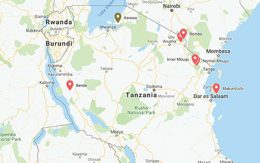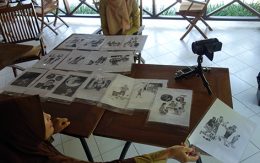Activities
Date:2009.12.08[Tue]- 12.10[Thu]
LingDy International Symposium on Grammar Writing 2009
*This event has already been held.
This symposium brings together the leading scholars on descriptive linguistics to exchange insights on theoretical, methodological, and practical issues in the art of grammar writing. In particular it focuses on the following issues:
- Role of theory in language description
- Phonology in grammar writing
- Categories and units in language description
- Role of usage in language description
- Role of grammatical sketches in language description
- Appropriate data for language description
- Organization and terminology in grammar writing
- Writing a grammar for non-specialists
Through the discussion at the symposium, we will explore ways to assist and encourage production of insightful and readable grammars and to raise the profile of grammar writing both within linguistics and in language documentation.
Dates
2009年12月8日(火)~10日(木)
Venue
Room 303, 3F, ILCAA, TUFS
Admission
Free
Program
Speakers
- Mark DONOHUE (Australian National University)
- Nicholas EVANS (Australian National University)
- Carol GENETTI (University of California, Santa Barbara)
- Marianne MITHUN (University of California, Santa Barbara)
- Ulrike MOSEL (Christian-Albrechts-Universität zu Kiel)
- Thomas PAYNE (University of Oregon)
- Andrew PAWLEY (Australian National University)
- Kenneth L. REHG (University of Hawai’i at Mānoa)
- Keren RICE (University of Toronto)
- Elena INDJIEVA (University of Hawai’i at Mānoa)
- Hiroko SATO (University of Hawai’i at Mānoa)
- Jake TERRELL (University of Hawai’i at Mānoa)
- Toshihide NAKAYAMA (ILCAA, TUFS)
- Hideo SAWADA (ILCAA, TUFS)
- Michinori SHIMOJI (Gunma Prefectural Women’s University)
- Fuyuki EBATA (University of Tokyo)
- Kosei OTSUKA (University of Tokyo)
- Emiko TSUJI (University of Tokyo)
- Yuto NIINAGA (University of Tokyo)
- Kazuhiro IMANISHI (University of Tokyo)
- Shengkai ZHANG (TUFS)
- Noboru YOSHIOKA (TUFS)
Poster
TIMETABLE
| 12/8 Tue | 12/9 Wed | 12/10 Thu | |
| 9:00 | Registration | ||
| 9:30 | |||
| 10:00 | Opening | Topic Session 4: | Workshop: |
| (15mins.) | Walking the Line: Finding the Balance in Academic Grammar Writing | Grammar Writing from the Student’s Perspective | |
| Panel Session 1: | Speaker: Carol GENETTI | Chair: Kenneth L. REHG | |
| 10:30 | Grammar Writing from the Advisor’s Perspective | presentations by students from University of Hawai’i: Elena INDJIEVA, Hiroko SATO, Jake TERRELL | |
| Chair: Andrew PAWLEY | |||
| position paper | |||
| 11:00 | panelists’ talks: Mark DONOHUE, Carol GENETTI, | Topic Session 5: | |
| Thomas PAYNE | Antipolysynthesis: the Descriptive Challenge of Templatic Clauses | Tea Break | |
| Speaker: Mark DONOHUE | |||
| 11:30 | Workshop (continued): | ||
| Tea Break | Chair: Kenneth L. REHG & Toshihide NAKAYAMA | ||
| presentations by students from Japan: | |||
| 12:00 | Panel Session 1 (continued): | Kazuhiro IMANISHI, Yuto NIINAGA, Kosei OTSUKA, | |
| discussion | Tea Break | Emiko TSUJI, Noboru YOSHIOKA, Shengkai ZHANG | |
| 12:30 | Topic Session 6: | discussion | |
| FINE Grammars for Small Languages | |||
| Speaker: Kenneth L. REHG | |||
| 13:00 | |||
| Lunch Break | Lunch Break | ||
| 13:30 | |||
| Lunch Break | |||
| 14:00 | Topic Session 1: | Topic Session 7: | |
| Empirical Foundations for Grammatical Description in the 21st Century | Toward a Balanced Formal / Functional Grammatical Description | ||
| Speaker: Marianne MITHUN | Speaker: Thomas PAYNE | ||
| 14:30 | Panel Session 2: | ||
| Grammar Writing — Looking into the Future | |||
| Chair: Nicholas EVANS | |||
| 15:00 | Topic Session 2: | position paper | Panel Session 3: |
| Collecting Data for Grammars of Previously Unresearched Languages | panelists’ talks: Marianne MITHUN, Ulrike MOSEL, Keren RICE | Toward a Balanced Formal / Functional Grammatical Description | |
| Speaker: Ulrike MOSEL | Chair: Thomas PAYNE | ||
| 15:30 | panelists’ talks: Michinori SHIMOJI, Fuyuki EBATA, | ||
| Hideo SAWADA | |||
| 16:00 | |||
| Tea Break | Tea Break | Tea Break | |
| 16:30 | Topic Session 3: | Panel Session 2 (continued): | Panel Session 3 (continued): |
| Phonology in Grammar Writing | discussion | discussion | |
| Speaker: Keren RICE | |||
| 17:00 | |||
| 17:30 | |||
| Welcome Party (18:00-20:00) |
ABSTRACTS
8 December (Tue.)
“Panel Session 1” Grammar Writing from the Advisor’s Perspective
Andrew PAWLEY
Australian National University
- Handout
- ps1_pawley.pdf (149K)
This panel session deals with issues encountered in advising students who write a grammar as a dissertation. The main aim is to exchange experiences and information about the practical issues and problems of grammar writing in a way that will be useful both for students and for advisors. The relevant topics include:
- What to expect in writing a grammar as a dissertation: the nature of the task
- How to prepare oneself for writing a grammar
- Dos and don’ts in writing a good grammar
- Common pitfalls/tough spots in grammar writing
- The role and duties of the advisor
By drawing on the rich experience of the panelists we hope to identify a list of common problems that arise in writing a grammar as a dissertation, together with ideas about how to solve them. The discussion should benefit both student grammar writers and faculty advisors. Students will get valuable advice about how to make good decisions in the course of gathering data for and writing a grammar and how to survive challenges and finish the task; faculty should gain insights from the panelists’ experiences about the role of the advisor in guiding students through the process of grammar writing, and about the common pitfalls and how to avoid them.
“Topic Session 1” Empirical Foundations for Grammatical Description in the 21st Century
Marianne MITHUN
University of California, Santa Barbara
- Handout
- ts1_mithun.pdf (314K)
Readers have traditionally approached reference grammars with certain expectations, anticipating at least basic descriptions of the sound system of the language, word formation, and sentence structure. Such information still constitutes the core of a good grammar. But as the field of linguistics progresses, and the community of potential grammar readers widens, ideas are also evolving about additional kinds of information that can enrich descriptions, information that will both move the field ahead and serve the needs of more users. Theoretical and technological advances are providing new tools and stimulating us to ask new questions. The threat of endangerment is inspiring ever more communities to mount language programs aimed at the documentation, preservation, and appreciation of their heritage languages. Distinctions between academic and community scholars are blurring. The result is a widening perspective on the kinds of information that will meet the varied and evolving needs of current and future audiences.
This paper considers some kinds of data that can contribute to both traditional topics of description and evolving directions of inquiry. First, consideration will be given to phonetics and phonology, morphology, and syntax. In some cases, technological advances are greatly enriching the kind of information that can be made available in a grammatical description, as well as the utility of these descriptions for community interests. The discussion will then move to newer issues in the field, with questions that can be answered only with new kinds of data and data collections. One of these areas is information structure and the discourse devices that organize larger stretches of speech. Another is patterns of interaction. Many grammatical and discourse structures emerge only in lively interaction. Still another is the ways in which grammatical patterns develop and evolve over time. Understanding such issues in many cases requires data on frequently-recurring patterns of expression, or observation of the extension of patterns from specific lexical items to ever larger groups. Yet another issue is the effects of language contact, not simply on vocabulary, but more on the transfer of patterns of expression. As our curiosity about language evolves, it makes sense to reconsider our methodologies for obtaining the data to answer our questions.
Clear descriptions of basic structures are important to everyone. Increasing typological sophistication brings more ideas about material to include. But a grammar can be more than a typological checklist: it can strive to convey what is special about the language. Often the unexpected can move theory ahead faster than yet another example of the expected. It can also highlight the unique heritage of the speakers and their descendants. A good grammar can go beyond listing forms to describing how those forms are used, and why they are the way they are. As we learn more about the nature of language and the factors that can shape it, we are also learning more about the kinds of data can further our understanding. All data can be precious, but different kinds can be valuable for different purposes, both as the raw material for analysis by the grammarian, and as examples for the grammar reader.
“Topic Session 2” Collecting Data for Grammars of Previously Unresearched Languages
Ulrike MOSEL
Christian-Albrechts-Universitat zu Kiel
- Handout
- ts2_mosel.pdf (1005K)
Most publications on linguistic field methods emphasize that a collection of recorded, transcribed and analysed texts is the most important source for the grammatical description of a previously unresearched language. (Bright 2007:16, Chelliah 2001, Bright 2007:16, Crowley 2007:121, Dixon 2010:321 among many others) But only two field manuals give some information on what constitutes a good corpus for grammaticographers and how the texts that are typically collected during fielwork can be classified (Samarin 1967:55-68, Rivierre 1992:56-63), while the crucial question of what kind of grammatical information can be gained from the analysis of various types of text seems to have been totally neglected in field linguistics. Therefore I would like to start a discussion on this topic by presenting a few results of my attempts to build up a corpus of the Teop language that both satisfies the expectations of the speech community and at the same time provides a useful database for the planned Teop Reference Grammar.
The paper first gives an overview of data collection methods and citicizes the way data from text collections are usually presented in grammars. Then follows a comment on what makes a good text collection in a language documentation project, while the remainder of the paper shows how the collection of various types of text can provide data of particular grammatical phenomena:
- Editing the transcriptions of oral narratives is a very practical method of collecting samples of constructions that native speakers regard as synonymous.
- Parallel narrative and procedural texts about the very same topic like net making or slaughtering a chicken show how the contrast between specific and habitual actions and between specific and generic agents is expressed.
- Monolingual dictionary definitions of nouns provide data of how the classification of living beings and things is expressed, which in the case of Teop involves non-verbal predicates, various kinds of adjectival attributes and relative clauses. The definitions of verbs, on the other hand, may contain nominalizations in subject position and complement clauses as predicates.
- The descriptions of trees and their parts, and how they are used for manufacturing artefacts provide examples for contructions with inanimate topics and the expression of the semantic role of instrument.
In general, the collection of procedural texts of similar activities like receipes and encyclopedic definitions of certain thematically defined lexical classes like fish names provide repetitious examples for particular word classes and constructions, which facilitate the identification of their structure, syntactic functions and meanings.
I hope that this paper instigates further discussions on fieldwork methods, the compilation and accessibility of corpora for previously unresearched languages, and the interaction of lexicography and grammaticography.
“Topic Session 3” Phonology in Grammar Writing
Keren RICE
University of Toronto
- Handout
- ts3_rice.pdf (181K)
Phonology is perhaps the most neglected piece of descriptive grammars. Grammars typically contain information about the sounds of a language and their distribution and perhaps some discussion of phonological processes such as assimilation, deletion, and epenthesis. They might include discussion of allophones. Frequently there is little or no discussion about the variation in sounds that occurs and often very little is said about their patterning, either at the word level or beyond. Transcription often represents the most conservative of forms, with little or no discussion of what the language actually sounds like. There is often little or no discussion of phonology above the level of the word, including the important features of intonation and other prosody.
The talk is divided into four major parts. I begin by speculating on why phonology has traditionally received less coverage in grammars than morphosyntax, or is at least perceived to have less coverage. This is likely due to a number of factors, including European traditions, where phonetics was considered to be distinct from grammar as well as the inherent difficulty of capturing sounds in writing.
Following this I examine reasons why careful coverage of phonology is important in order to provide a full description of a language. I focus in particular on the role that grammars have often come to serve today, important tools for the study of language change and for language revitalization.
I then survey the type of information about phonology that is actually found in grammars. I begin this by reviewing the Routledge descriptive grammar series guidelines (1977) and the guidelines for the Cambridge Grammar Series (1996), focusing on what they suggest is required for adequate phonological coverage in a grammar. I accompany this with a survey of two very recent award-winning grammars, Dixon’s grammar of Jarawara (Linguistic Society of America Bloomfield Award, 2006) and Genetti’s grammar of Dolakha Newar (Association for Linguistic Typology Georg von der Gabelentz Award, 2009), discussing the rather different ways in which these two works cover phonology.
Based on this survey, I summarize the state-of-the-art of grammars with respect to phonology outlining what kinds of phonological information might be included in a detailed reference grammar, paying attention to phonetic detail and phonology above the level of the word as well as word-level phonology. I argue that in an ideal situation, a reference grammar should include quite full information about the phonetics and phonology of a language, with a focus on variation and its grammatical context and, under ideal circumstances, its social context as well. In order to do this, material needs to be drawn from both elicited speech and spontaneous speech, with attention to prosody at the sentence level and above as well as to the word. This can be a challenge to achieve and must of course be weighed against all the other things that one would like to include in a reference grammar. I end with a discussion of what aspects of phonology might be included in a grammar that is designed with the goal of helping serve the needs of a language revitalization program.
9 December (Wed.)
“Topic Session 4” Walking the Line: Finding the Balance in Academic Grammar Writing
Carol GENETTI
University of California, Santa Barbara
- Handout
- ts4_genetti.pdf (109K)
Academic grammars are multi-dimensional studies, which can be significantly
enriched with linguistic argumentation and theoretical observation. However,
incorporating too much linguistic theory creates a grammar which will be dated
and difficult to interpret, and too much argumentation can be tedious and lead
to the frustration of the reader. On the other hand, grammars which are devoid
of deeper observations can be dry and uninteresting. In this talk we will
explore three dimensions of grammar-writing related to linguistic theory and
for each consider how to balance accurate description with the richness and
value of theoretical observation.
We will begin by exploring the balance between typologically-established
patterns and language-specific categories. Our understanding of a linguistic
structure can only proceed with reference to theoretically-defined notions.
Linguistic typology provides a vantage point for language-particular structures.
Especially useful is the set of types defined by this research (e.g. the lexical
class of adjective; the category of object). However, we need not be constrained
by viewing these as endpoints of the investigation; instead, we can treat them
as prototypes against which the structures of the language can be compared,
contrasted, explored, and explained. This approach allows us to incorporate the
theoretical notions of linguistic typology without being bound by them. It allows
for simple linguistic description to revolve around and enrich the theoretically-defined
categories.
The second dimension is that between assertion and argumentation. In describing
a particular linguistic phenomenon, one can assert one analysis or one can provide
multiple analyses and argue that one is correct. Assertion is appropriate for
lower-level linguistic features (e.g. phonetic detail), simple canonical structures
(e.g. proximal and distal demonstratives), or uncontroversial elements or their
functions (e.g. syllable structures; the uses of the past tense). Arguing for such
simple phenomena can obscure the primary descriptive facts. However, there are cases
where argumentation is appropriate, especially when structures differ from
typologically-expected patterns or when we are countering specific analyses in the
literature. It is also important to provide argumentation in any case where there
are multiple possible interpretations of a structure. Thus we can balance the
assertion of simple descriptive facts with argumentation for more complex structures.
Finally, we will consider theoretical innovation, and the balance between
following convention and pushing the boundaries. Typically we think of innovative
theoretical claims as being the stuff of journal articles. However, our role as
grammar writers is to portray how the language works in the clearest and most
accurate way. If a particular analysis goes against theoretical convention but
provides the best account of the phenomenon being described, we should not feel
constrained but should present the language as we see it working. On the other
hand, if we entirely innovate with excessive new terminology and concepts, we
risk making the grammar difficult to use as a reference tool. Thus innovations
need to be motivated, well explained, and balanced by a typologically-informed
descriptive base. The result will be a grammar that will advance linguistic theory
and profile the unique theoretical import of the language.
[Topic Session 5] Antipolysynthesis: the Descriptive Challenge of Templatic Clauses
Mark DONOHUE
Australian National University
- Handout
- ts5_donohue.pdf (136K)
Linguistic theory provides different tools and different methods for description and analysis at different levels: acoustic analysis is not as useful for lexical semantics as it is for phonology, for instance. Languages with polysynthetic profiles, which have been described as compressing the syntax of the clause into a single word, present a challenge to this approach, since they can be argued to lack the syntactic component of description. At the same time, there exist languages for which the clause is best described with the descriptive style that is most commonly applied to morphology, rather than a syntactic one. Mixing levels of descriptive style, rather than adhering to a single kind of analysis for each component of a language, is an essential part of grammar-writing, and it provides for challenging conclusions not only about the language in question, but about language as a whole.
This talk examines the structure of clauses in One, a Torricelli language of northern New Guinea. There are no hints of polysynthetic characteristics in One, but there are numerous reasons to suppose that the syntax of the language is strongly templatic, rather than showing the sort of behaviours frequently described in syntax. We will examine the ways in which the analytical assumptions associated with syntactic description fail to meet the challenge of describing the deceptively uncluttered structure of One clauses.
“Topic Session 6” FINE Grammars for Small Languages
Kenneth L. REHG
University of Hawai’i at Mānoa
- Handout
- ts6_rehg.pdf (231K)
The literature on language documentation urges linguists to collaborate with speech communities and to provide them with useful products. Yet, as Himmelmann (2006:19) notes: “Grammars, and (to a lesser extent) dictionaries provide little that is of direct use to non-linguists, including the speech community, educators, and researchers in other disciplines …” Dobrin (2009:619) more generally contends that there is a “great gap between academically produced knowledge about language on the one hand, and real-world problems on the other.”
It is certain, however, that our grammatical analyses can be made useful to the speakers of the languages we study. One means of doing so is by packaging them in the form of FINE grammars. FINE grammars are *Focused (written for a specific purpose and audience), and they are *Interesting (designed to be read and enjoyed). They result from*Naturalistic observation (based primarily on real rather than contrived data), and they are also *Educational (serve a clear pedagogical purpose.) Like sketch grammars, they provide concise accounts of selected features of a language, but whereas sketch grammars are often written prior to the development of comprehensive grammars, FINE grammars typically derive from such works.
In this presentation, I describe a FINE grammar planned for Pohnpeian, a language spoken in the Federated States of Micronesia. This particular FINE grammar is designed to help Pohnpeians master the standard orthography of their language. It thus includes information about Pohnpeian phonology, morphology, and syntax, as well as dialect variation and usage, all discussed in terms of their consequences for writing the language. I also argue that the preparation of such grammars is of benefit not only to the speakers of the language, but to linguists as well. That is, the writing of a FINE grammar entails approaching the language from a different starting-point and thus has the potential to enrich our understanding of it.
In the case of Pohnpeian, I demonstrate an outcome of this nature by showing how a study of dialect variation, undertaken in anticipation of the development of this FINE grammar, has uncovered new facts about the language that will be of interest to both native speakers and linguists. I also discuss other types of FINE grammars that might be developed for this language, including ones dealing with honorific speech, the comparison of Pohnpeian to closely related languages, contrasts between Pohnpeian and English grammatical structures, etc. All are likely to be of interest to many members of the community.
The ultimate value of FINE grammars and similar products, however, may be that they serve to demonstrate to non-linguists that our research and our knowledge about language are of consequence. If our discipline is to rise above the marginal status it now occupies, then finding practical applications for our work is essential. As Dobrin and Good (2009:629) note: “Linguistics could come to more closely resemble fields like medicine and economics, where interplay between theory and practice is welcomed in adding to their richness, and where ‘applied’ forms of work are not seen as belonging to a separate discipline.”
Dobrin, Lise. 2009. SIL International and the disciplinary culture of linguistics. Introduction. Language 85.618-619.
Dobrin, Lise and Jeff Good. 2009. Practical language development: Whose mission? Language 85.619-629.
Himmelmann, Nikolaus. 2006. Language documentation: What is it and what is it good for? Essentials of language documentation, ed. by Jost Gippert, Nikolaus P. Himmelmann, and Ulrike Mosel, 1-30. New York: Mouton de Gruyter.
“Panel Session 2” Grammar Writing — Looking into the Future
Nicholas EVANS
Australian National University
- Handout
- ps2_evans.pdf (187K)
By its nature, work of grammar writing is one of the most rewarding, but at the same time the hardest, research activity in linguistics. The difficulty has to do with the richness of the intellectual activity itself, and in that sense it is very much a part of what grammar writing is. But we can ask ourselves whether the profession is coping with meeting our scientific goals as well as it can be – in terms of our conceptions of grammar, how far we are meeting the challenge of getting first-rate grammars for all the world’s languages, embedded at least in a Boasian trilogy of grammars, texts and dictionaries. One part of this session will look at scientific issues which future grammar writers need to wrestle with, including the relation of corpus to speaker knowledge, multilectal grammars, the opportunities of hypertext, the increased demands for inspectability and verifiability, and gradual standardisation of terminology in linguistics.
In this session we will also look at what the linguistic profession can do to help reach that goal. Among the issues we will focus on are:
- managing the sometimes conflicting demands of documentarianism and grammar-writing
- getting the right sorts of support programs for grammar writers at all phases of their career, including the large blocks of time needed to complete full grammars
- getting appopriate systematic training for grammar writing – what works best? Specific training on grammar writing? In typology? Field methods courses? Studies of particular languages?
- getting sufficient publication support worldwide that good grammars can find publishers
- developing strong academic incentive for grammar writing, not equally present in all parts of the world
We will examine the issues in the present state and historical development of the grammar writing research and will work toward identifying steps that we as an academic community can take to invigorate the important enterprise of grammar writing.
10 December (Thu.)
“Workshop” Grammar Writing from the Student’s Perspective
Kenneth L. REHG
University of Hawai’i at Mānoa
Toshihide NAKAYAMA
Research Institute for Languages and Cultures of Asia and Africa
- Handout
- ws_indjieva.pdf (5M)
- ws_sato.pdf (683K)
- ws_imanishi.pdf (2M)
- ws_niinaga.pdf (75K)
- ws_otsuka.pdf (195K)
- ws_tsuji.pdf (142K)
- ws_yoshioka.pdf (232K)
- ws_zhang.pdf (523K)
This workshop brings together students from Japan and US who are currently writing grammars or grammatical sketches. The student presenters will report on issues that they are facing in the process. The goal of this workshop is to provide an opportunity for these students to share experiences with others and also to obtain insights into the art of grammar writing from the perspective of students.
Presenters:
- Part 1:
- Elena INDJIEVA (University of Hawai’i at Mānoa): “Xinjiang Oirat Sketch Grammar. Work in Progress.”
- Hiroko SATO (University of Hawai’i at Mānoa): “A grammatical sketch of
Kove: some challenges” - Jake TERRELL (University of Hawai’i at Mānoa): “Describing a religious register: the songs of the Akha shaman”
- Part 2:
- Kazuhiro IMANISHI (University of Tokyo): “Describing the morphology of Amis”
- Yuto NIINAGA (University of Tokyo): “Issues in writing a grammatical sketch of the Yuwan dialect of Amami”
- Kosei OTSUKA (University of Tokyo): “Issues in writing a grammatical sketch of Tiddim Chin”
- Emiko TSUJI (University of Tokyo): “Issues in writing a grammatical sketch of ‘Ôrôe”
- Noboru YOSHIOKA (Tokyo University of Foreign Studies): “Issues in writing a grammatical sketch of the Burushaski language”
- Shengkai ZHANG (Tokyo University of Foreign Studies): “Issues in writing a grammatical sketch of Chinese Pingjiang dialect”
“Topic Session 7” Toward a Balanced Formal / Functional Grammatical Description
Thomas PAYNE
University of Oregon
- Handout
- ts7_payne.pdf (140K)
Among the many tensions that writers of linguistic grammars face is the
question of whether the description will be organized according to function
or form. In general, languages are similar in their communicative functions,
while they differ in the forms that express those functions. For this
reason, a descriptive grammar based on form tends to emphasize the
idiosyncrasies of the language described, and makes comparison from one
language to the next more difficult. Furthermore, since purely formal
approaches lack a communicative perspective, they tend to be dry, hard to
follow, and alien to the ways of thinking of most speakers of the language.
On the other hand, a grammatical description based on communicative function
highlights the universal characteristics of the language, and therefore may
gloss over unique and important structural features.
In the present paper, I will propose a general outline for a grammatical
description that is “balanced” between function and form. In general, the
traditional “lower levels” of linguistic analysis (phonology, morphology)
are best approached from a “form-first” perspective, while “higher level”
analysis (syntax, pragmatics, semantics) is best approached from a
“function-first” perspective.
“Panel Session 3” Toward a Balanced Formal / Functional Grammatical Description
Thomas PAYNE
University of Oregon
- Handout
- ps3_shimoji.pdf (64K)
- ps3_ebata.pdf (61K)
- ps3_sawada.pdf (43K)
We are constantly faced with the issue of the form-function balance in descriptive research — not only in designing the overall organization of a grammar but also in placing the descriptions of individual phenomena properly within the general structure of a grammar. Obviously we have to hit the right balance between the two extremes, but finding is the exact point of ‘the right balance’ is a major struggle. In this regard, the topic that is raised by Professor Payne’s talk is a perpetual issue in grammar writing and is shared by all the descriptive linguists.
In the abstract of Topic Session 7, Prof. Payne argues that the traditional “lower levels” of linguistic analysis (phonology, morphology) are best approached from a “form-first” perspective, while “higher level” analysis (syntax, pragmatics, semantics) is best approached from a “function-first” perspective.
This proposal provides a useful guideline, but there seem to be cases where the “form-first” approach does not necessarily provide the best solution even in the domain of morphology.
In this panel session we take up illustrative cases from three individual languages, which might complicate the task of finding the balance of formal and functional approaches within the domain of morphology, in order to deepen discussion of the issue that is laid out in the talk of Topic Session 7.
The session was also planned as an extension of the activity of the joint research project “Linguistic Diversity and Linguistic Theory: Morphological Typology and Syntactic Diversity” (Coordinator: Toshihide Nakayama) of ILCAA. All of presenters are members of the project.
Presenters:
- Michinori SHIMOJI (Gunma Prefectural Women’s University): “Property concepts in Irabu: their formal encodings and functional network”
- Fuyuki EBATA (University of Tokyo): “Variety in the usage of Sakha proprietive ‘-LEEX’ “
- Hideo SAWADA (ILCAA, TUFS): “Lhaovo (Maru) post-nominal modifiers as true nouns”
BIOGRAPHIES
Mark DONOHUE

Mark Donohue (BA Asian Studies (Hons), PhD (ANU)) is Research Fellow in the Department of Linguistics, Australian National University.
Research Interests: Austronesian languages, Papuan languages, morphosyntax, phonology, historical and areal linguistics, linguistic typology.
Current projects: the social history of Island Southeast Asia and Melanesia, as revealed through areal linguistic research; ongoing fieldwork on Austronesian and Papuan languages of Indonesia and Papua New Guinea (focussing on Tukang Besi, Palu’e, Ambai [Austronesian], Skou, Damal, One [Papuan]).
Publications: “Prefixal ‘suffixes’ in Skou” (2008), “Word order in Austronesian: from north to south and west to east” (2007), “Negative grammatical functions in Skou” (2006), “Configurationality in the languages of New Guinea” (2005), I’saka: a sketch grammar of a language of north-central New Guinea (with Lila San Roque) (2004), “Coding choices in argument structure: Austronesian applicatives in texts” (2001), A Grammar of Tukang Besi (1999), “Tone in New Guinea” (1997), “Bajau, a symmetrical Austronesian language” (1996).
Nicholas EVANS
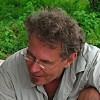
Nick Evans is Professor of Linguistics at the Australian National University. He has been engaged in fieldwork on a number of languages of Northern Australia and Southern New Guinea.
His research interests include grammatical and semantic typology, pragmatics, intonation, historical linguistics, contact and areal linguistics, problems of documenting endangered languages, the interactions of language, culture and thought, and the use of linguistic evidence in native title claims.
He has published grammars of the Australian languages Kayardild (1995; Mouton de Gruyter) and Bininj Gun-wok (2003: Pacific Linguistics), coedited a book on grammar-writing (Catching Language; with Felix Ameka and Alan Dench), and supervised PhD grammars of a dozen languages of Australia, Melanesia and South-East Asia.
His book Dying Words: Endangered Languages and What They Have to Tell Us recently appeared with Wiley/Blackwell and his recent BBS paper with Steve Levinson, The Myth of Language Universals, makes the case for a new approach to linguistics that places typological diversity at centre stage.
Carol GENETTI

Carol Genetti is a Professor in the Department of Linguistics University of California, Santa Barbara. She is a specialist in languages of the Himalayan region, particularly varieties of Newar. She has published on a wide range of topics, including recent studies on nominalization in Tibeto-Burman and the historical development of the adjective class in Newar. In 2009 her volume A Grammar of Dolakha Newar received the inaugural Georg Von der Gabelentz Award from the Association for Linguistic Typology. Current projects include recent fieldwork on her heritage language Nones, an endangered Rhaeto-Romance variety spoken in northern Italy, and a preliminary description of Dzala, a hitherto undescribed Tibeto-Burman language spoken in eastern Bhutan. In 2008 she directed the first Institute on Field Linguistics and Language Documentation and is now in the process of co-founding a new international Consortium on Training in Language Documentation and Conservation.
Marianne MITHUN
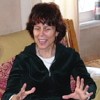
Marianne Mithun is a Professor in the Department of Linguistics, University of California, Santa Barbara. Her research interest includes morphology, syntax, discourse, prosody, and their interrelations, language change, language contact, language documentation, language description.
Related publications:
2006. Grammars and the community. Studies in Language 30.2:281-306. Reprinted in Perspectives on grammar writing. Thomas Payne and David Weber, eds. Amsterdam: Benjamins.
2007. Linguistics in the face of language endangerment. Language Endangerment and Endangered Languages. Leo Wetzels, ed. CNWS. Leiden University, The Netherlands. 15-35.
2007. What is a language? Documentation for diverse and evolving audiences. Sprachtypologie und Universalienforschung 60.1:42-55.
2009 Re(e)volving complexity: Adding intonation. Syntactic complexity: Diachrony, Acquisition, Neuro-cognition, Evolution. T. Givón and M. Shibatani, eds. Amsterdam: Benjamins. 53-80.
In press. The search for regularity in irregularity: Defectiveness and its implications for our knowledge of words. Defective paradigms: Missing forms and what they tell us. Matthew Baerman et al. eds. Oxford, UK: British Academy and Oxford University.
In press. Questionable relatives. Typological aspects of relative clauses. B. Comrie and Z. E. Fernández, eds. Amsterdam: Benjamins.
Ulrike MOSEL
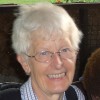
Prof. Dr. Ulrike Mosel holds the chair of General Linguistics at the University of Kiel, Germany. She has done research on classical Arabic grammaticography (1975) and written three grammars on Oceanic languages: Tolai (1984), Samoan (with Even Hovdhaugen, 1992) and Teop (2007) and was one of the initiators of the language documentation programme DOBES programme of the Volkswagen Foundation. Currently she is writing a corpus-based grammar of Teop (Papua New Guinea). She has supervised six PhD theses on grammars of previousky unresearched languages.
Recent Publications:
Mosel, Ulrike. 2006a. ‘The art and craft of writing grammars’, in Felix Ameka, Alan Dench and Nicholas Evans. Catching language. The standing challenge of grammar writing, 41-68.
Mosel, Ulrike. 2006c. ‘Sketch grammar’, in Jost Gippert, Nikolaus Himmelmann and Ulrike Mosel (eds.) Essentials of language documentation. Berlin, New York: Mouton de Gruyter, 301-309.
Toshihide NAKAYAMA
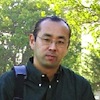
Toshihide Nakayama is an Associate Professor at ILCAA, TUFS. He has been working primarily on Nuuchahnulth (a Wakashan language spoken in British Columbia, Canada), and his research interests include morphology, syntax, interactions between grammar and discourse, grammatical typology, and language documentation. Among the main publications are books on Nuuchahnulth, Nuuchahnulth (Nootka) Morphosyntax (2001, University of California Press) and two text collections with grammatical analyses (2003, Endangered Languages of the Pacific Rim Project, Osaka).
Current projects include documentation and description of three dialects (Ahousaht, Tseshaht, and Huuayaht) of Nuuchahnulth and a Miyako dialect of Ryukyuan. He is the head of the Linguistic Dynamics Science Research Project, a strategic research project at ILCAA that focuses on research on linguistic diversity and documentation of endangered languages. He is also the founder and representative of a collaborative research community for junior field linguists in Japan, Fieldling.
Andrew PAWLEY

Andrew Pawley (MA, PhD Auckland, FRSNZ, FAHA) is Emeritus Professor in the Department of Linguistics, Research School of Pacific and Asian Studies, Australian National University. Research interests: description and history of Austronesian and Papuan languages and the nature of linguistic and communicative competence. Fieldwork in Papua New Guinea, Fiji, Samoa and Tasmania. Current projects: (1) doing dictionaries and grammatical analysis of Kalam, of the Schrader Ranges, Papua New Guinea, the Wayan dialect of Western Fijian, and Gela (Solomon Is.) (2) ethnobiological work on Kalam, (3) The lexicon of Proto Oceanic, a 7 volume series (with M. Ross and M. Osmond), (4) comparative-historical work on the Trans New Guinea family, (5) gender-assignment to inanimate nouns in colloquial English. Publications related to the grammar-writing conference include Samoan phrase structure (1966), The structure of Karam (1966), ‘A sketch grammar of the Nabukelevu language of Kadavu’ (1982), ‘Lexicalization’ (1986), (with Frances Syder) ‘Two puzzles for linguistic theory: nativelike selection and nativelike fluency’ (1983), ‘The role of speech formulas in linguistic competence’ (1985), ‘A language which defies description by ordinary means’ (1993), ‘Australian vernacular English: some grammatical characteristics’ (2004), ‘Compact vs narrative serial verb constructions in Kalam’ (2008).
Thomas E. PAYNE

Thomas E. Payne is an International Linguistics Consultant with SIL International, and Research Associate at the University of Oregon, USA. He has taught graduate and undergraduate courses in descriptive linguistics, and conducted workshops and field research in more than a dozen countries. Previous publications include a guide for descriptive linguists and an introductory textbook in morphology and syntax, both published by Cambridge University Press. Two additional books and numerous articles and invited lectures deal with topics in descriptive linguistics, syntax, semantics, pragmatics and discourse analysis. Current research projects include grammatical descriptions of Panare, a Cariban language of Venezuela, and Xibe, a Tungus-Manchu language of Northwestern China.
Kenneth L. REHG

Kenneth L. Rehg is an Associate Professor of Linguistics at the University of Hawai’i at Mānoa and a leading authority on the languages of Micronesia, a region in which he has conducted extensive fieldwork over the course of the past four decades. He is the (co)author of a reference grammar, a pedagogical grammar, and a dictionary of Pohnpeian, coordinator of his department’s graduate program in language documentation and conservation, faculty advisor to UHM’s student-directed Language Documentation Training Center, founding editor of the journal Language Documentation & Conservation, and Chair of the Linguistic Society of America’s Committee on Endangered Languages and their Preservation. His interests include documentary linguistics, phonology, lexicography, historical linguistics, and the application of linguistics to the formation of educational policies and practices in the developing nations of the Pacific. He is currently preparing a second edition of the Pohnpeian-English Dictionary and working with colleagues on Pohnpei on matters related to Pohnpeian orthography.
Keren RICE

Keren Rice is University Professor and Canada Research Chair in Linguistics and Aboriginal Studies at the University of Toronto, where she is also a member of the President’s Teaching Academy. She is founding director of Aboriginal Studies and the Centre for Aboriginal Initiatives at the University of Toronto.
She has worked on the Athabaskan language Dene (Slavey) for many years, and has been involved in research on the language as well as serving on a committee to look at orthography standardization and working with speakers of the language on teaching the language. Her book A Grammar of Slave received the first Leonard Bloomfield Book Award in 1990.
As well as writing on Dene and other Athabaskan languages, she has published on doing fieldwork, ethical issues in fieldwork, and on the writing of grammars. She is currently involved in a project with a group of students to write a grammar of Esan, an Edoid language of Nigeria. In addition, she has worked on aspects of phonology, with a focus on markedness in recent years.



